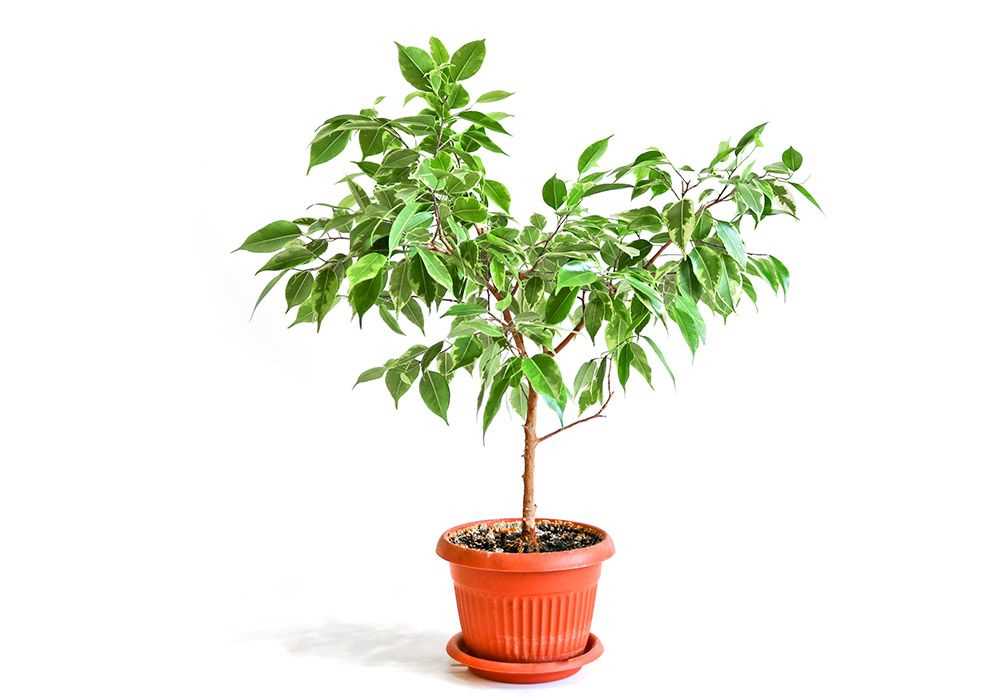- Choosing the Right Spot
- 1. Light Requirements
- 2. Temperature
- 3. Humidity
- 4. Space
- 5. Avoid Temperature Extremes
- Providing Adequate Lighting
- 1. Keep in a well-lit area
- 2. Rotate the plant
- 3. Supplement with artificial light
- 4. Monitor light intensity
- Maintaining the Right Temperature
- 1. Ideal Temperature Range
- 2. Avoid Cold Drafts
- 3. Provide Adequate Ventilation
- 4. Monitor Temperature Variations
- 5. Avoid Hot Spots
- 6. Consider Artificial Lighting
- Watering Properly
- 1. Understanding the watering needs
- 2. Checking the soil moisture
- 3. Watering frequency
- 4. Watering method
- 5. Using the right water
- 6. Adjusting watering during different seasons
- Fertilizing Regularly
- Pruning and Shaping
- Dealing with Pests and Diseases
- 1. Identifying common pests
- 2. Natural pest control methods
- 3. Common diseases and their treatments
- 4. Preventing pests and diseases
- 5. Seeking professional help
- Repotting as Needed
- 1. Timing
- 2. Choosing the Right Pot
- 3. Prepare the Potting Mix
- 4. Carefully Remove the Plant
- 5. Prune the Roots and Trim the Foliage
- 6. Repot the Plant
- 7. Water and Monitor
- Q&A:
- How often should I water my ficus plant?
- Can I keep my ficus plant outside?
- What kind of light does a ficus plant need?
- How often should I fertilize my ficus plant?
- What should I do if my ficus plant’s leaves are turning yellow?
- How do I prune my ficus plant?
- Video: Protect Your Citrus Trees from Leaf Miners: Essential Tips for Gardeners!
Ficus trees are popular indoor plants known for their lush foliage and ability to thrive in a variety of environments. Whether you have a Ficus benjamina, Ficus elastica, or Ficus lyrata, proper care is essential for keeping your Ficus plant healthy and thriving.
One of the most important aspects of caring for a Ficus plant is providing it with the right amount of light. Ficus plants prefer bright, indirect light, so placing them near a window with filtered sunlight is ideal. Avoid exposing your Ficus to direct sunlight, as this can cause leaf burn.
In addition to proper lighting, Ficus plants also require regular watering. It’s important to keep the soil evenly moist, but not overly wet. Allow the top inch or so of soil to dry out between waterings, and be sure to use a well-draining potting mix to prevent waterlogged roots. Remember to adjust your watering schedule based on the season – Ficus plants may require more water during the summer months.
Ficus plants also benefit from occasional fertilization. Use a balanced, water-soluble fertilizer once a month during the growing season (spring and summer) to provide essential nutrients. Be sure to follow the instructions on the fertilizer packaging for proper dosage and application.
Tip: Ficus plants are known for being sensitive to changes in their environment, so try to keep them in a consistent location without frequent movement.
Finally, keep an eye out for common pests that can affect Ficus plants, such as mealybugs or scale insects. Regularly inspect your plant for any signs of infestation, such as sticky residue, yellowing leaves, or tiny bugs crawling on the foliage. If you notice any pests, promptly treat the affected areas with an insecticidal soap or neem oil to eliminate the problem.
By following these essential care tips, you can ensure that your Ficus plant remains vibrant and healthy for years to come. With the right amount of light, proper watering, occasional fertilization, and a watchful eye for pests, your Ficus plant will thrive in its indoor environment.
Choosing the Right Spot

When it comes to caring for a ficus plant, one of the most important factors for its success is choosing the right spot for it to thrive. Here are some essential tips to consider when selecting a location for your ficus plant:
1. Light Requirements
Ficus plants thrive in bright, indirect light. They can tolerate some direct sunlight, but too much can burn their leaves. It’s best to place your ficus plant near a window with filtered light or in a spot that receives bright, indirect light throughout the day. Avoid placing it in a dimly lit area or directly in front of a sunny window.
2. Temperature
Ficus plants prefer a warm and humid environment. They thrive in temperatures between 60-75°F (15-24°C). Avoid placing your ficus plant near drafts or air conditioning vents, as sudden changes in temperature can cause leaf drop and stress the plant.
3. Humidity
Ficus plants enjoy high humidity levels, especially during the summer months. You can increase humidity around your ficus plant by placing a tray filled with water and pebbles near it. As the water evaporates, it will create a more humid environment. Misting the leaves with water also helps to increase humidity.
4. Space
Ficus plants can grow quite large, so make sure to choose a spot with enough space for the plant to grow and spread out. They also benefit from regular pruning to maintain their shape and size. Consider the mature size of your ficus plant when selecting a spot for it.
5. Avoid Temperature Extremes
Lastly, ficus plants are sensitive to temperature extremes. Avoid placing your ficus plant near heaters, fireplaces, or cold drafts from windows or doors. These temperature extremes can cause stress to the plant and lead to leaf drop.
By considering these factors and choosing the right spot, you can create the perfect environment for your ficus plant to thrive and grow.
Providing Adequate Lighting
When it comes to caring for a ficus plant, providing adequate lighting is crucial for its overall health and growth. Ficus plants thrive in bright, indirect light, so it’s important to place them in a location where they can receive sufficient light throughout the day.
1. Keep in a well-lit area
Place your ficus plant near a window that receives bright, indirect light. Avoid placing it in direct sunlight, as this can cause the leaves to burn and scorch. A south or east-facing window is often the best spot for a ficus plant.
2. Rotate the plant
To ensure that all sides of the ficus receive adequate light, rotate the plant every few weeks. This will prevent the plant from leaning towards the light source and promote even growth.
3. Supplement with artificial light
If your ficus plant is not receiving enough natural light, you can supplement its lighting needs with artificial light. Use fluorescent or LED grow lights and position them above the plant. Keep the lights on for around 12 to 16 hours a day to mimic natural daylight.
4. Monitor light intensity

Take note of any changes in light intensity throughout the year. During the winter months, the sun’s intensity may decrease, so you may need to adjust the plant’s positioning or supplement with artificial light to ensure it continues to receive enough light.
By providing adequate lighting, your ficus plant will thrive and maintain its lush, green foliage. Remember to regularly monitor the light conditions and make any necessary adjustments to ensure your ficus receives the light it needs.
Maintaining the Right Temperature
The temperature plays a crucial role in the health and growth of your ficus plant. Here are some essential tips for maintaining the right temperature:
1. Ideal Temperature Range
Ficus plants thrive in temperatures between 60°F and 75°F (15°C and 24°C). It is important to avoid extreme temperature fluctuations and provide a stable, moderate climate for your plant.
2. Avoid Cold Drafts

Ficus plants are susceptible to damage from cold drafts. Keep your plant away from windows, doors, and areas with cold air drafts to prevent temperature shocks.
3. Provide Adequate Ventilation
While ficus plants prefer moderate temperatures, it is crucial to provide them with proper ventilation. Stagnant air can lead to humidity problems and negatively impact the health of your plant.
4. Monitor Temperature Variations
During winter months or in locations with fluctuating temperatures, use a thermometer to monitor the temperature around your ficus plant. Consider using a space heater or adjusting the central heating system to maintain a stable temperature.
5. Avoid Hot Spots
Ficus plants are sensitive to extreme heat as well. Keep your plant away from heating vents, radiators, and direct sunlight. Exposure to high temperatures can lead to wilting, leaf yellowing, and even plant death.
6. Consider Artificial Lighting
In winter or if your ficus plant is not receiving enough natural light, consider using artificial lighting sources, such as fluorescent or LED grow lights. These lights can help maintain a stable temperature while providing the necessary light for your plant’s growth.
By following these tips, you can ensure that your ficus plant is kept in the right temperature range for optimal health and growth.
Watering Properly
Proper watering is essential for the health and well-being of your ficus plant. Here are some key tips to ensure you are watering your ficus properly:
1. Understanding the watering needs
It’s important to understand the watering needs of your ficus plant. Ficus plants prefer to have evenly moist soil, but they don’t like to sit in water. Overwatering can lead to root rot and other issues, so it’s important to find the right balance.
2. Checking the soil moisture

Before watering your ficus, always check the moisture level of the soil. Stick your finger about an inch into the soil; if it feels dry, it’s time to water. If it still feels moist, wait a few more days before watering again.
3. Watering frequency
The frequency of watering will depend on various factors like the size of the pot, temperature, humidity, and the growth stage of the plant. As a general rule, water your ficus plant when the top inch of soil feels dry.
4. Watering method
When watering your ficus, pour water evenly over the soil until it starts draining out from the bottom of the pot. This ensures that the entire root system is given a thorough watering. Avoid getting water on the leaves, as it can lead to fungal diseases.
5. Using the right water
Use room temperature water when watering your ficus. Avoid using water straight from the tap, as it may contain chlorine or other chemicals that can harm the plant. You can let the water sit for 24 hours to allow any chlorine to dissipate before using it.
6. Adjusting watering during different seasons
During the growing season, which is typically spring and summer, your ficus may require more frequent watering. In winter, when the growth slows down, you can reduce the watering frequency.
Remember, it’s always better to slightly under water your ficus than to overwater it. With time, you’ll learn to understand your plant’s watering needs and adjust accordingly. Monitoring the moisture level of the soil and observing your ficus plant’s overall health will help you determine when it needs water.
Fertilizing Regularly

Fertilizing your ficus plant regularly is essential for its overall health and growth. Proper fertilization provides essential nutrients that may be lacking in the soil, helping the plant to thrive and maintain its vibrant appearance.
1. Choose the Right Fertilizer: When selecting a fertilizer for your ficus plant, opt for a balanced, water-soluble fertilizer specifically formulated for indoor plants. Look for a fertilizer with equal amounts of nitrogen, phosphorus, and potassium (NPK) to ensure your ficus receives a well-rounded nutrient supply.
2. Follow the Instructions: Read and follow the instructions on the fertilizer packaging carefully. The dosage and frequency of application may vary depending on the fertilizer brand and your specific ficus plant’s needs. Over-fertilizing can lead to nutrient burn and damage the roots, so it’s important to apply the fertilizer as directed.
3. Apply Fertilizer During the Growing Season: Ficus plants typically have a period of active growth during the spring and summer months. This is the ideal time to fertilize your plant. Reduce or cease fertilization during the fall and winter months when the plant’s growth slows down.
4. Dilute the Fertilizer: It’s important to dilute the fertilizer according to the instructions before applying it to your ficus plant. Too concentrated of a fertilizer solution can also cause harm to the plant. Mix the fertilizer with water in a separate container and then apply it to the soil around the plant.
5. Apply Fertilizer to Moist Soil: Water your ficus plant thoroughly before applying fertilizer. Applying fertilizer to moist soil helps prevent root burn and allows the roots to absorb the nutrients effectively.
6. Avoid Fertilizing Newly Repotted Plants: If you have recently repotted your ficus plant, refrain from fertilizing for at least a month or as advised by the repotting instructions. This allows the plant to adjust to its new environment and reduces the risk of root damage.
7. Monitor and Adjust: Keep an eye on your ficus plant for signs of nutrient deficiency or excess. If you notice yellowing leaves, stunted growth, or abnormal foliage coloration, it may be an indication that the plant needs a different fertilizer or an adjustment in the fertilizer application frequency.
8. Flush the Soil: Every few months, flush the soil of your ficus plant with plain water to remove any excess fertilizer salts that may have accumulated. This prevents the build-up of harmful salts that can cause root damage over time.
Caring for your ficus plant by fertilizing it regularly is a key aspect of its overall maintenance. By providing your plant with the necessary nutrients, you can ensure its long-term health and enjoy its beauty for years to come.
Pruning and Shaping
Pruning and shaping your ficus plant is essential for maintaining its health and promoting proper growth. Regular pruning helps to remove dead or damaged branches, encourage new growth, and maintain a desired shape or size.
Here are some essential tips for pruning and shaping your ficus plant:
- Choose the right time: Prune your ficus plant during its dormant period, which is usually in late winter or early spring. This is when the plant is not actively growing and will minimize stress on the ficus.
- Use clean and sharp tools: Before pruning, make sure your tools are clean and sharp to avoid introducing any infections or diseases. You can clean your tools with rubbing alcohol or a mild bleach solution.
- Start with dead or damaged branches: Begin by removing any dead, diseased, or damaged branches. Cut them back to the main stem or at a healthy node using pruning shears or scissors.
- Thin out crowded areas: Look for areas where the branches are crowded or crossing over each other. Thin out the branches by removing some of them to improve airflow and light penetration.
- Shape the plant: If you want to shape your ficus plant, start by deciding on the desired shape or form. You can prune the branches to encourage a bushier shape or trim them to create a more formal appearance. Use caution and step back periodically to assess the plant’s overall shape as you prune.
- Prune lightly: It’s best to prune lightly and gradually rather than removing large sections all at once. This will give the ficus plant time to recover and reduce the risk of shock or stress.
- Avoid excessive pruning: While ficus plants tolerate pruning well, excessive pruning can lead to stress and cause the plant to lose its leaves. Only prune what is necessary to maintain the desired shape and health of the plant.
Remember, when pruning your ficus plant, it’s important to take your time and make each cut with care. Observing the plant’s growth patterns and adjusting your pruning technique accordingly will help you achieve a healthy and beautifully shaped ficus plant.
Dealing with Pests and Diseases
1. Identifying common pests
- Mealybugs: Look for small, white, cotton-like clusters on the leaves and stems.
- Scale insects: These pests look like small brown or gray bumps on the plant.
- Aphids: Look for small, green or black insects clustered on the leaves or stems.
- Spider mites: These pests are tiny and may appear as tiny red or yellow dots on the leaves.
2. Natural pest control methods

If you notice signs of pests on your ficus plant, try these natural remedies:
- Neem oil: Dilute neem oil with water and spray it on the affected areas to control pests.
- Soap and water solution: Mix mild liquid soap with water, apply it to the plant, and rinse off after a few minutes.
- Isopropyl alcohol: Use a cotton swab soaked in alcohol to gently wipe away scale insects.
3. Common diseases and their treatments
- Root rot: This fungal disease occurs when the roots are consistently overwatered. To treat root rot, improve drainage and reduce watering.
- Leaf spot: Leaf spot is a common fungal infection that causes dark spots on the leaves. Remove and destroy infected leaves and treat the plant with a fungicide.
- Powdery mildew: Powdery mildew appears as a white, powdery coating on the leaves. Treat with a fungicide and improve air circulation.
- Anthracnose: Anthracnose causes leaf and stem spots. Remove and destroy infected parts and treat the plant with a fungicide.
4. Preventing pests and diseases
To prevent pests and diseases, follow these tips:
- Inspect regularly: Check your ficus plant regularly for signs of pests or diseases.
- Clean leaves: Dust your plant’s leaves regularly to prevent pests from settling.
- Water properly: Avoid overwatering your ficus as it can lead to root rot.
- Maintain humidity: Ficus plants thrive in humid environments, so mist the leaves regularly or use a humidifier.
5. Seeking professional help
If your ficus plant is heavily infested or showing severe signs of disease, consult a professional plant care specialist for diagnosis and treatment options.
Repotting as Needed
Repotting is an essential part of caring for a ficus plant. As the plant grows, its roots will outgrow the current pot and need more space to continue thriving. Here are some tips for repotting your ficus:
1. Timing
It’s best to repot a ficus plant during the spring or summer months when the plant is in its active growth phase. Avoid repotting during the winter when the plant is dormant.
2. Choosing the Right Pot
Select a pot that is slightly larger than the current one. Make sure the new pot has drainage holes to prevent waterlogging. A plastic or ceramic pot generally works well for ficus plants.
3. Prepare the Potting Mix
Use a well-draining potting mix that is rich in organic matter. A mix of peat moss, perlite, and compost can work well. This will provide the necessary nutrients and allow for sufficient drainage.
4. Carefully Remove the Plant
Gently remove the ficus plant from its current pot, loosening the roots if they are tightly packed. Be careful not to damage the roots during this process.
5. Prune the Roots and Trim the Foliage
If the root system is too dense, you may need to prune some of the roots to encourage new growth. Similarly, you can trim any excessive foliage to ensure the plant’s energy is focused on root development.
6. Repot the Plant
Place a layer of the prepared potting mix at the bottom of the new pot. Position the ficus plant in the center and fill the pot with more potting mix, gently firming it around the roots. Leave some space at the top to allow for watering.
7. Water and Monitor
After repotting, give the ficus plant a thorough watering to help settle the soil. Monitor the plant closely for a few weeks to ensure it adjusts well to its new pot. Avoid fertilizing for a month after repotting.
By following these repotting tips, you can ensure that your ficus plant continues to thrive and grow in a healthy manner.
Q&A:
How often should I water my ficus plant?
Ficus plants should be watered once the top inch of soil feels dry to the touch. Depending on the environment and climate, this usually means watering once every 7-10 days.
Can I keep my ficus plant outside?
Ficus plants can be kept outside as long as the temperature is above 50 degrees Fahrenheit (10 degrees Celsius). However, they prefer to be indoors in a well-lit area away from drafts.
What kind of light does a ficus plant need?
Ficus plants thrive in bright, indirect light. They should not be placed in direct sunlight as it can burn their leaves. A well-lit room near a window is an ideal spot for a ficus plant.
How often should I fertilize my ficus plant?
Ficus plants should be fertilized every 2-4 weeks during the growing season, which is typically spring and summer. Use a balanced, water-soluble fertilizer at half the recommended strength for best results.
What should I do if my ficus plant’s leaves are turning yellow?
Yellowing leaves on a ficus plant can indicate overwatering or underwatering. Check the soil moisture levels and adjust your watering routine accordingly. Also, make sure your ficus is not receiving too much direct sunlight, as this can cause leaf discoloration.
How do I prune my ficus plant?
To prune a ficus plant, use clean pruning shears to remove any dead or yellowing leaves, as well as any branches that are growing too long or in an undesirable shape. This will help promote new growth and maintain the plant’s overall shape.
Video:
Protect Your Citrus Trees from Leaf Miners: Essential Tips for Gardeners!







